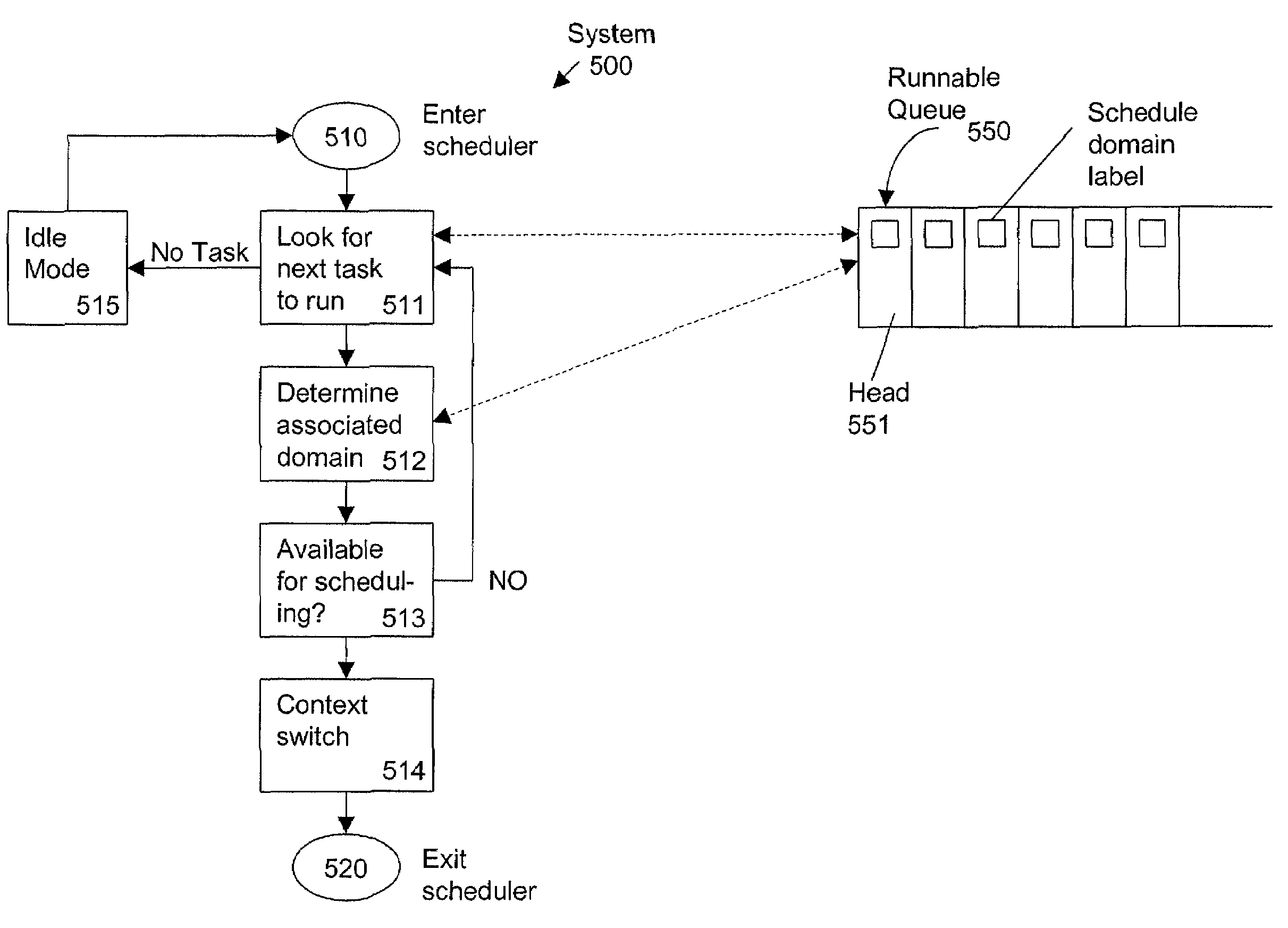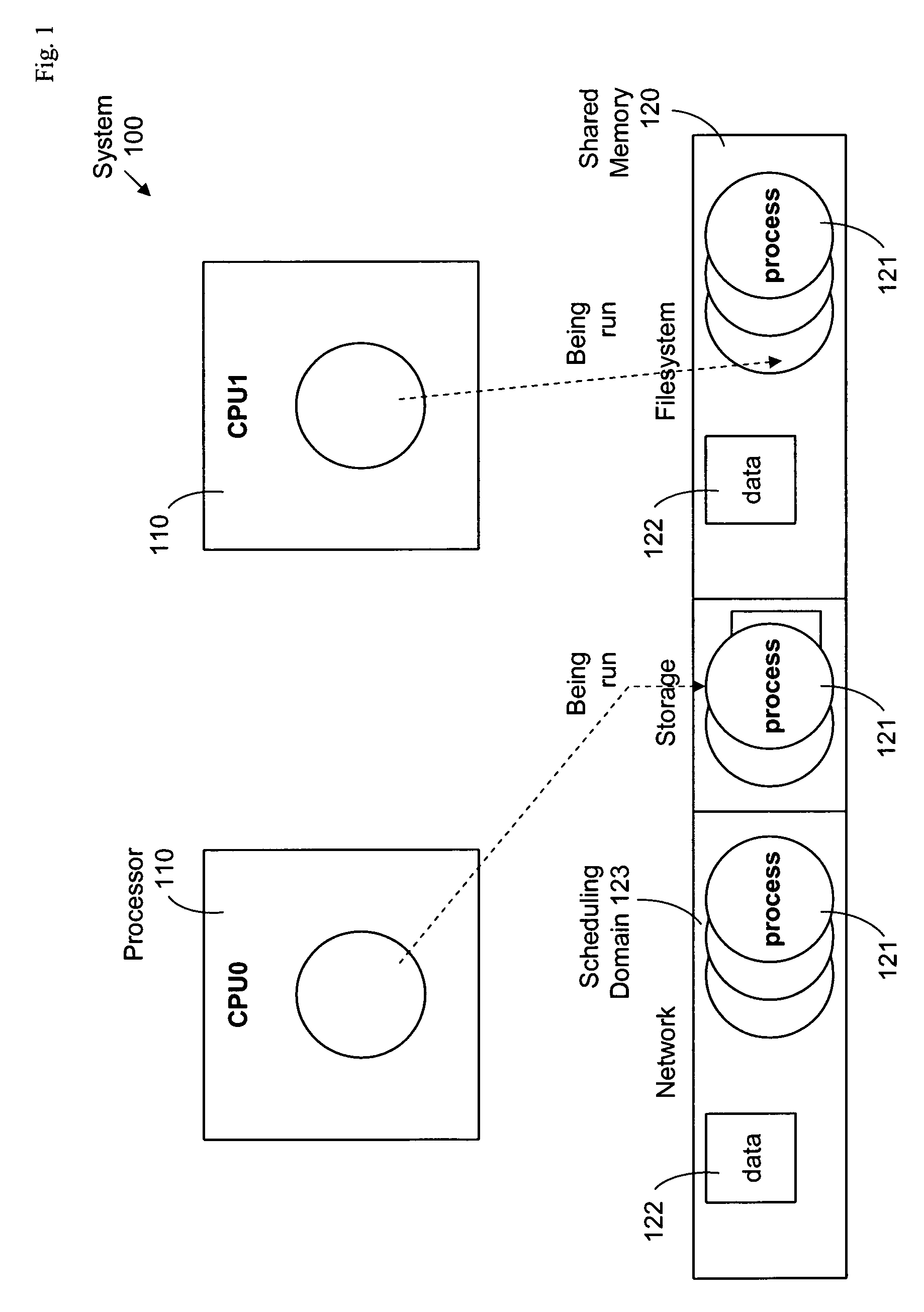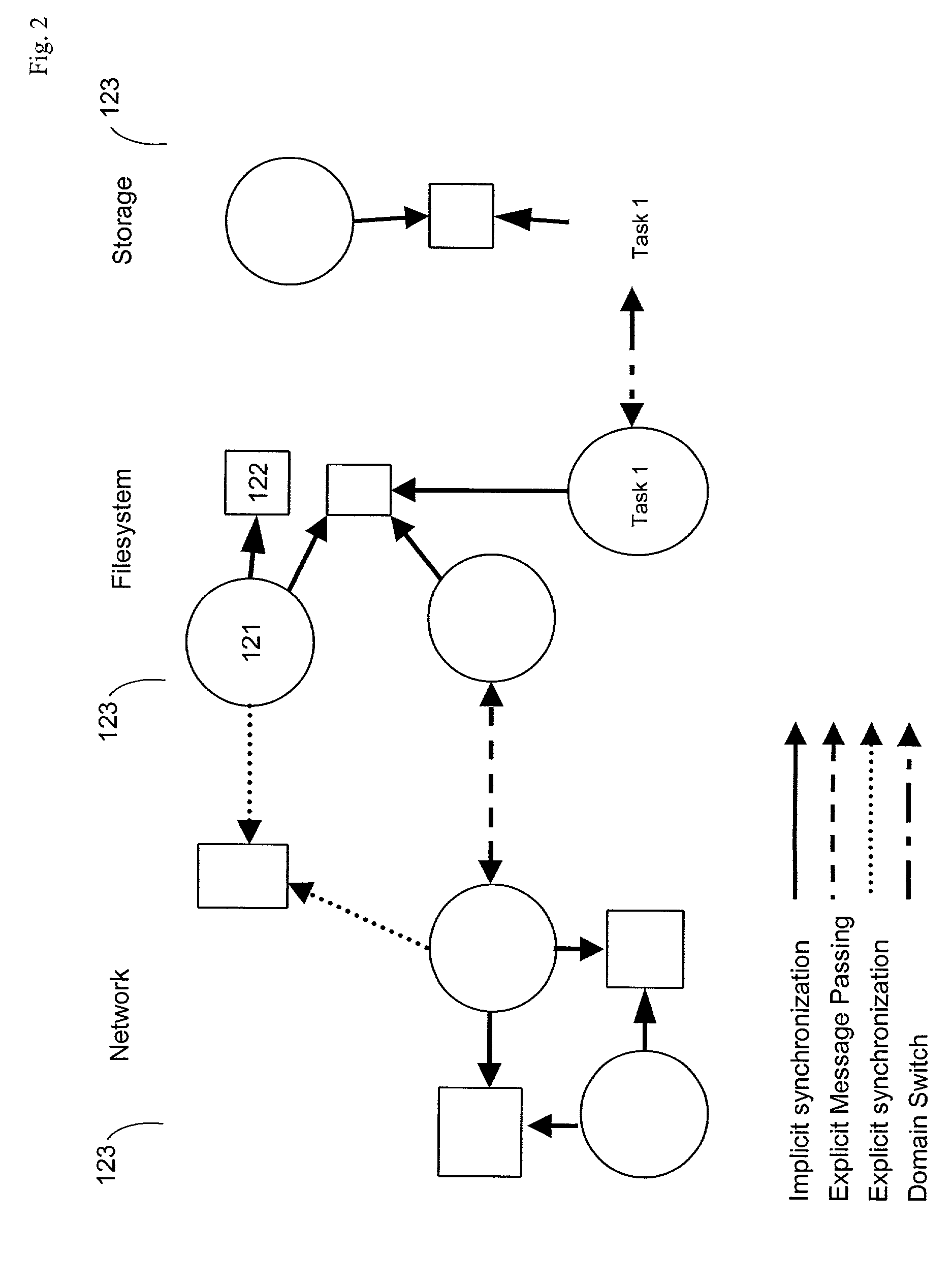Symmetric multiprocessor synchronization using migrating scheduling domains
a multiprocessor and scheduling domain technology, applied in multiprogramming arrangements, program control, instruments, etc., can solve the problems of not exploiting the parallelism of a multiprocessor system to the fullest extent, large amount of resources (human design and coding), and relatively large amounts of resources. , to achieve the effect of improving load balancing among processors
- Summary
- Abstract
- Description
- Claims
- Application Information
AI Technical Summary
Benefits of technology
Problems solved by technology
Method used
Image
Examples
Embodiment Construction
[0025]In the following description, a preferred embodiment of the invention is described with regard to preferred process steps and data structures. Those skilled in the art would recognize after perusal of this application that embodiments of the invention can be implemented using one or more general purpose processors or special purpose processors or other circuits adapted to particular process steps and data structures described herein, and that implementation of the process steps and data structures described herein would not require undue experimentation or further invention.
Related Information
[0026]Inventions described herein can be used in conjunction with inventions described in the following application(s):
[0027]Application Ser. No. 09 / 828,284, Express Mail Mailing No. EL 734 816 389 US, filed the same day, in the name of inventors Christopher PEAK, Sathya BETTADAPURA, and Jeffrey KIMMEL, titled “Automatic Verification of Scheduling Domain Consistency”.
[0028]Each of these a...
PUM
 Login to View More
Login to View More Abstract
Description
Claims
Application Information
 Login to View More
Login to View More - R&D
- Intellectual Property
- Life Sciences
- Materials
- Tech Scout
- Unparalleled Data Quality
- Higher Quality Content
- 60% Fewer Hallucinations
Browse by: Latest US Patents, China's latest patents, Technical Efficacy Thesaurus, Application Domain, Technology Topic, Popular Technical Reports.
© 2025 PatSnap. All rights reserved.Legal|Privacy policy|Modern Slavery Act Transparency Statement|Sitemap|About US| Contact US: help@patsnap.com



